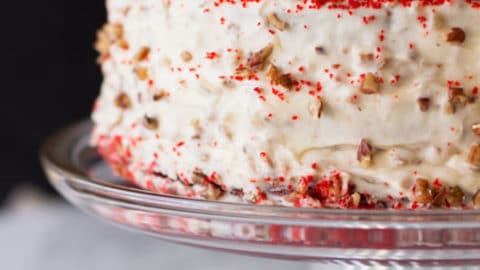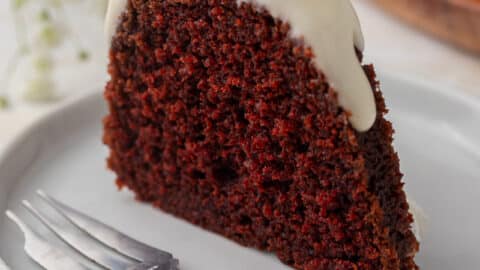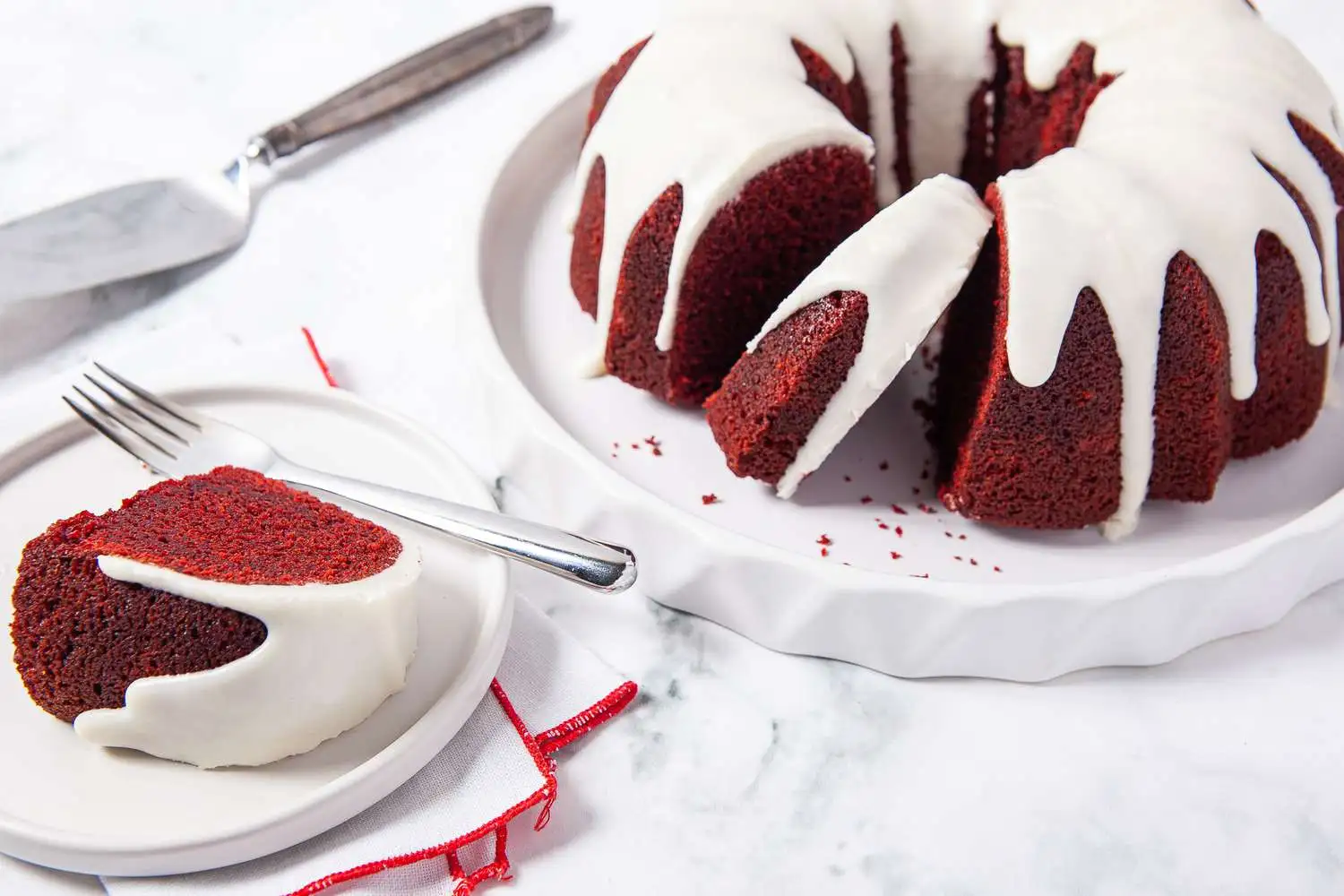Ah, the red velvet bundt cake – a classic dessert that has captured the hearts of many.
But have you ever wondered how this beloved treat came to be? Let’s take a journey through time and explore the evolution of this iconic recipe.

The Origins of Red Velvet
The story begins in the early 20th century, when the concept of red velvet cake was first introduced in the United States.
The exact origin is unclear, but it’s believed to have started in the Southern states, where bakers experimented with ingredients like cocoa, buttermilk, and food coloring to create a unique flavor and color combination.
The Early Years (1900s-1940s)
During this period, red velvet cake gained popularity in the United States, particularly among wealthy households.
It was often served at special occasions like weddings and holidays.
The cake was characterized by its distinctive red color, which came from using beet juice or red food coloring.
The texture was moist and tender, thanks to the addition of buttermilk and mayonnaise.
The Rise to Fame (1950s-1960s)
As the decades passed, red velvet cake became a staple in American bakeries.
It was often served at upscale restaurants and hotels, where it was paired with cream cheese frosting for a tangy contrast.
The recipe spread throughout the country, with each region adding its own twist.
In the 1950s and 60s, red velvet cake became a popular choice for birthday parties and other celebrations.
The Golden Age of Red Velvet (1970s-1980s)
The 1970s and 80s saw a surge in red velvet’s popularity, thanks in part to the rise of mixers and convenience foods.
Cakes mixes became widely available, making it easy for home bakers to create their own red velvet masterpieces.
This period also saw the introduction of new flavors like chocolate chip and strawberry.

The Decline and Revival (1990s-2000s)
In the 1990s and early 2000s, red velvet cake began to lose some of its luster.
With the rise of trendy new desserts like cupcakes and brownies, classic cakes like red velvet seemed old-fashioned.
However, a new generation of bakers rediscovered the joy of traditional baking, leading to a revival of interest in vintage recipes like red velvet.
Modern-Day Red Velvet
Today, red velvet bundt cakes are more popular than ever.
Bakers have experimented with new flavors and ingredients, from boozy additions to creative glazes.
While traditional recipes remain beloved, modern twists like matcha-green tea or espresso-red velvet have captured attention.
The Secret to a Perfect Red Velvet Bundt Cake
So what makes a perfect red velvet bundt cake? Here are some tips:
Use high-quality cocoa powder for depth of flavor
Don’t overmix the batter – just until combined
Use buttermilk for moisture and tenderness
Add a splash of vinegar for brightness
Top with cream cheese frosting for a tangy contrast
Conclusion
As we’ve seen, the history of red velvet bundt cake is a rich one.
From its humble beginnings in the early 20th century to its modern-day popularity, this classic dessert has undergone many transformations.
Whether you’re a seasoned baker or a novice in the kitchen, there’s no denying the allure of this beloved recipe.

FAQs
Q: Can I use food coloring instead of beet juice?
A: While food coloring can achieve the desired color, beet juice adds a subtle flavor and moisture to the cake.
Q: How do I store leftover red velvet bundt cake?
A: Wrap tightly in plastic wrap or aluminum foil and store at room temperature for up to 3 days.
Q: Can I make red velvet bundt cake ahead of time?
A: Yes! Prepare the batter up to 2 days in advance and bake just before serving.
Q: What’s the best way to frost a bundt cake?
A: Use a serrated knife or offset spatula to smooth out any crumbs or imperfections before applying frosting.
Try adding an acidic ingredient like lemo
Q: Can I substitute buttermilk with regular milk?
A: While possible, substituting buttermilk may affect texture and flavor.
